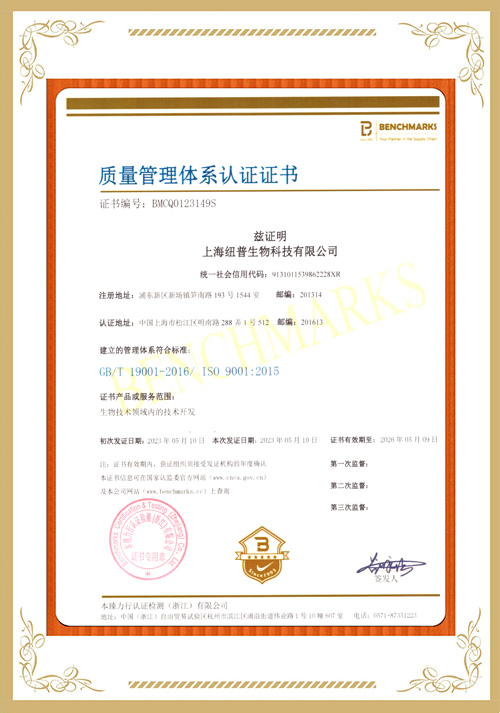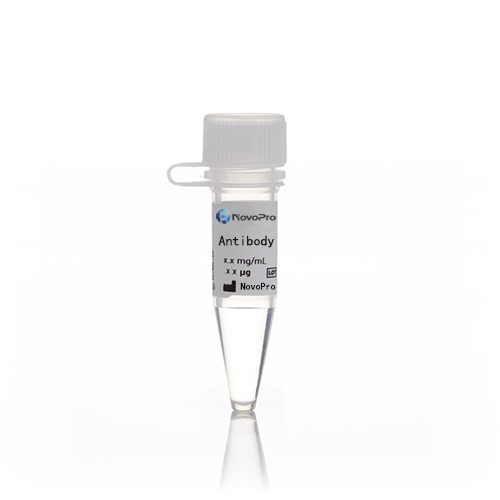- 抗体类型:单克隆
- 抗体来源:兔
- 抗体应用:FCM
- 特异性:Human AKR1B1
产品详情
-
产品名称
Anti-AKR1B1 antibody
-
抗体类型
单克隆
-
抗体来源
兔
-
抗体亚型
兔IgG
-
抗体描述
Rabbit monoclonal to AKR1B1
-
抗体应用
FCM
-
应用推荐
FCM: 0.5-2 μg/Test
-
特异性
Human AKR1B1
-
蛋白别名
ALDR1, ADR, ALR2, AR, MGC1804
-
制备方法
This antibody was obtained from a rabbit immunized with purified, recombinant Human AKR1B1 (rh AKR1B1; P15121; Met1-Phe316).
-
组分
0.2 μm filtered solution in PBS
-
储存方法
This antibody can be stored at 2℃-8℃ for one month without detectable loss of activity. Antibody products are stable for twelve months from date of receipt when stored at -20℃ to -80℃. Preservative-Free.
Sodium azide is recommended to avoid contamination (final concentration 0.05%-0.1%). It is toxic to cells and should be disposed of properly. Avoid repeated freeze-thaw cycles. -
背景介绍
Aldose reductase (AKR1B1) belongs to the aldo/keto reductase superfamily. AKR1B1 is a NADPH-dependent aldo-keto reductase best known as the rate-limiting enzyme of the polyol pathway. Expression of AKR1B1 was the highest in lens and retina. It is the first enzyme in the polyol pathway through which glucose is converted to sorbitol which is important for the function of various organs in the body, and has been implicated in the etiology of diabetic complications. AKR1B1 is quite abundant in the collecting tubule cells and thought to provide protection against hypertonic environment. Some human tissues contain AKR1B1 as well as AKR1B10, a closely related member of the aldo-keto reductase superfamily.
-
参考文献
- Huang SP, et al. (2010) Aldo-Keto Reductases in the Eye. Journal of Ophthalmology. 326 (3): 625-36.
- Aida K, et al. (2000) Disruption of Aldose Reductase Gene (Akr1b1) Causes Defect in Urinary Concentrating Ability and Divalent Cation Homeostasis. Biochemical and Biophysical Research Communications.277 (2): 281-6.
- Liao CS, et al. (2009) Regulation of AKR1B1 by thyroid hormone and its receptors. Molecular and Cellular Endocrinology. 307 (1-2): 109-17.
- Baba SP, et al. (2009) Posttranslational glutathiolation of aldose reductase (AKR1B1): A possible mechanism of protein recovery from S-nitrosylation. Chemico-Biological Interactions. 178 (1-3): 250-8.


